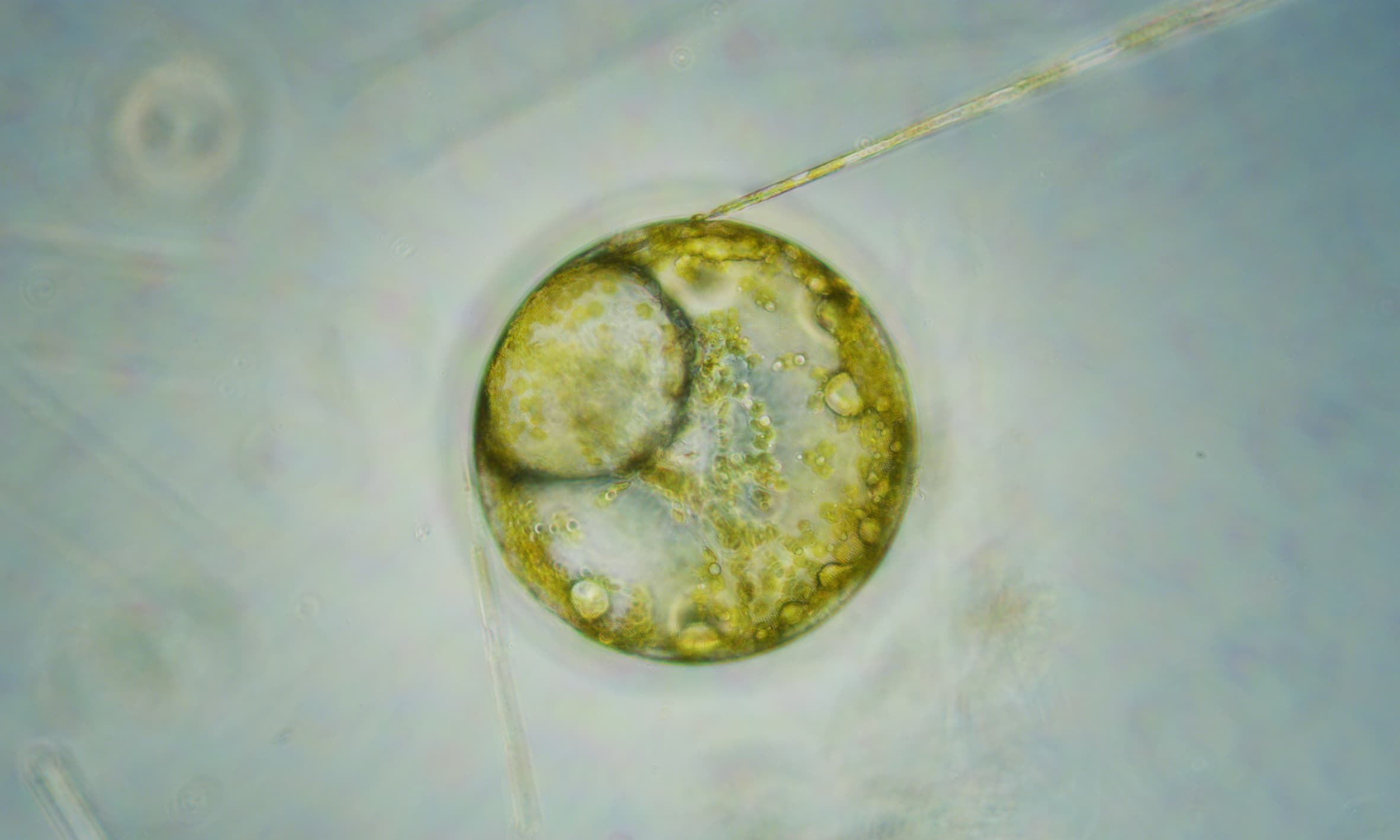Convened by curators Daniela Arriado and Vanina Saracino, the Screen City Biennial 2019 was inaugurated on October 17th and on view through October 30th. The program brought together six major commissions alongside a thematically tight selection of previously existing artworks the pivot of which was ecological thinking. The artworks were presented online on the biennial’s website and, in collaboration with local institutions, distributed across fourteen locales in and around the city of Stavanger with a particular focus on the harbour area.
Continuing where the previous edition of the biennial, Migrating Stories (curated by Daniela Arriado and Tanya Toft Ag), left off, the theme and title chosen for the 2019 edition was Ecologies – Lost, found and continued. In the exhibition booklet, Arriado and Saracino state their aim to highlight “ecologies that may be ‘lost’ to the dominant imaginary of the modern, rationalised Western society and found in what by some is considered to be the peripheries of this”. Condemning belittling and derogatory attitudes towards indigenous cultures, the biennial suggests that a solution to the current climate crisis might spring from indigenous knowledge systems across the globe. Apropos, contemporary art was harnessed to unearth the hidden, create engagement and serve as a call to action. The main theme, Ecologies, was further divided into subcategories that corresponded with what was deemed as the defining characteristics of the host city and utilised to anchor the artworks into the local context. These subcategories were, as Saracino expatiated on in the opening speech of the biennial: cruise ship tourism, aquaculture, and the oil industry.
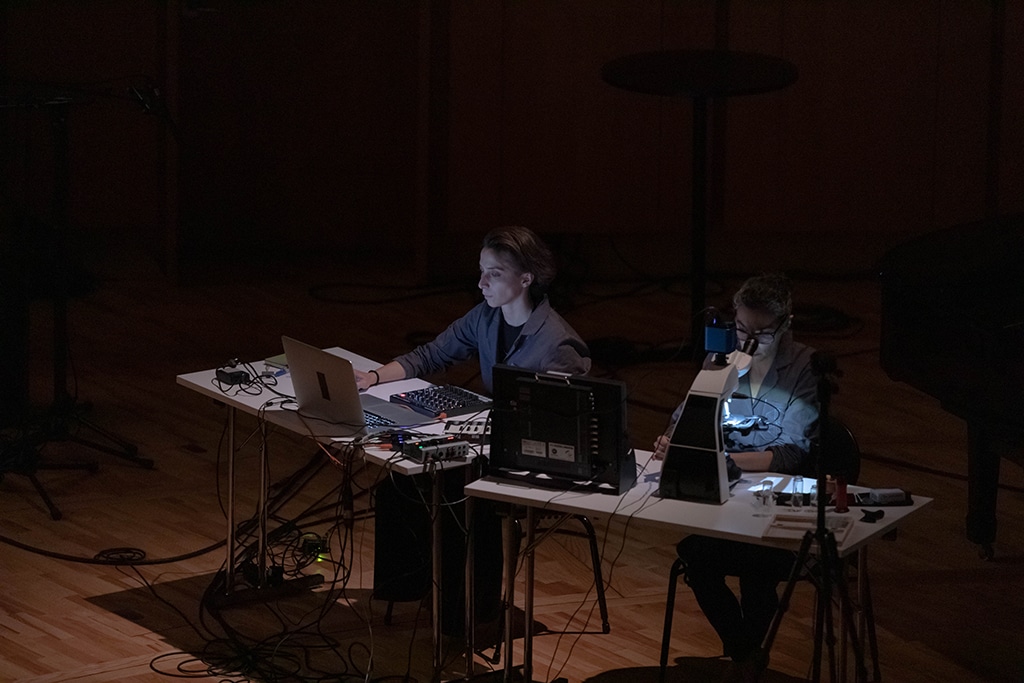
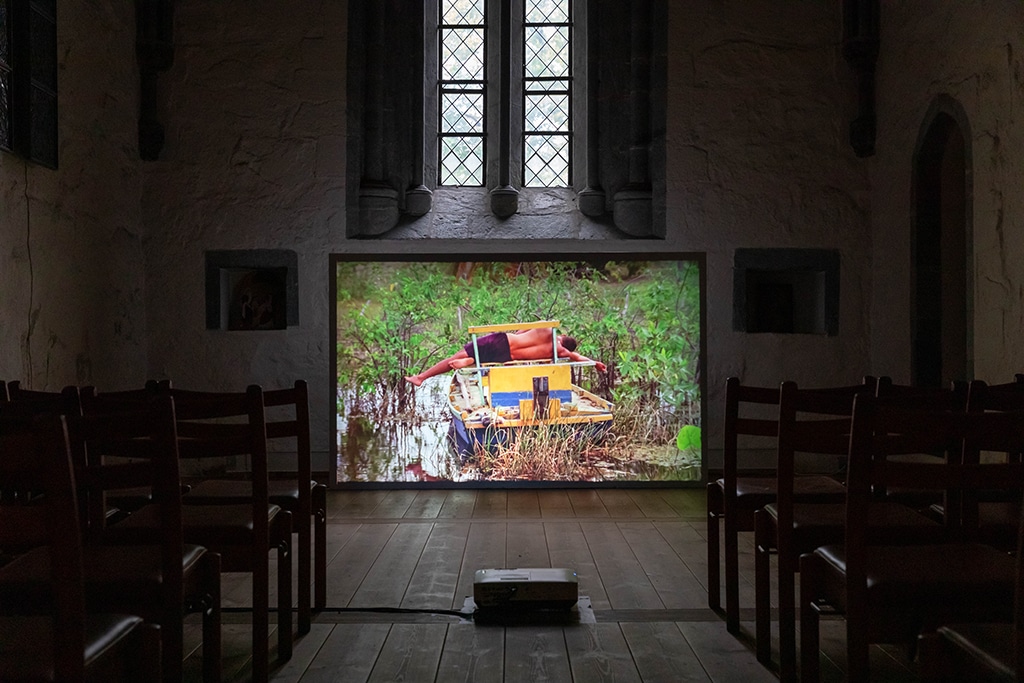
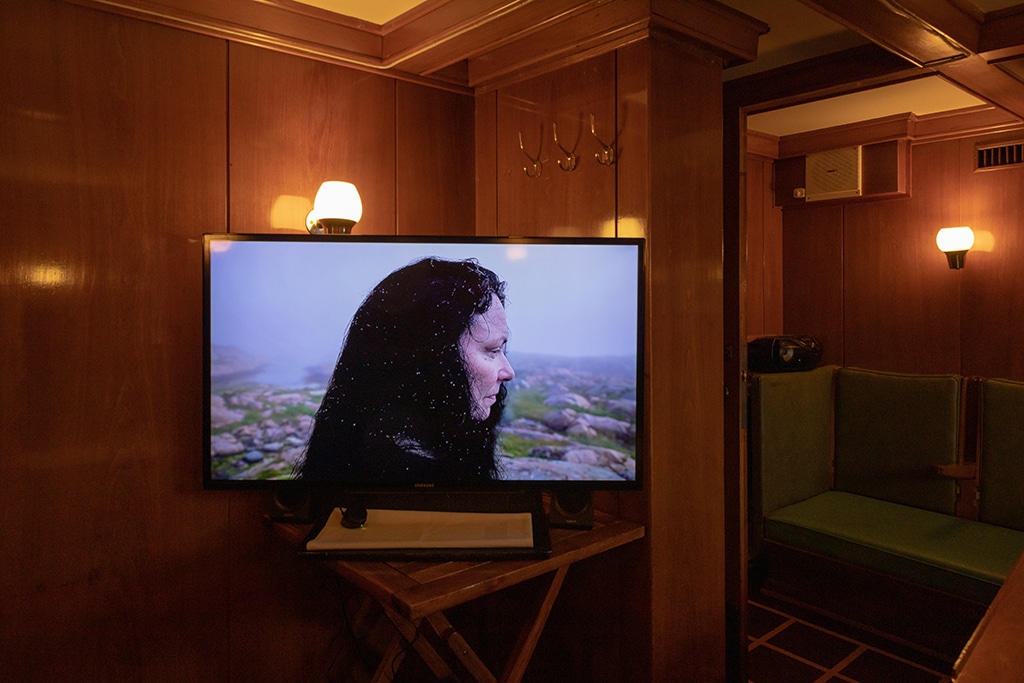


Among the newly commissioned works were Saara Ekström’s Beacon (2019), a guided walk with three handheld projectors and a soundtrack of decelerated singing of a nightingale. Coupling art, technology and public space, the piece neatly aligned with the disposition of Screen City. Filmed on 8 mm and transferred to a digital format, images of endangered wildlife captured at Finnish nature reserves were projected onto the streets and buildings of Stavanger’s harbour area as well as the participants of the walk. Following the guiding light shone by Ekström’s Beacon, biennale goers and city dwellers who accidentally came across the performance were thus granted a glimpse into idyllic scenes of nature on the brink of disappearance.
A familiar format from the previous editions of Screen City was continued through collaboration with the Organ Night (Orgel Natt) at the Stavanger Concert Hall, this time featuring Michelle-Marie Letelier’s and Kalma’s audiovisual Caliche Crystals (2019), performed in collaboration with organist Nils Henrik Asheim, and a screening of Marjolijn Dijkman and Toril Johannessen Reclaiming Vision (2018) that was adapted for the occasion to feature a live soundtrack by electronic musician Henry Vega and cellist Jan Willem Troost. Filmed with a microscope, the cinematic Reclaiming Vision played out like an action movie with nearly-transparent microorganisms as leading characters. Peering into the lifeworlds of these unlikely heroes, part cultivated in a lab and part sampled from brackish water at the mouth of the Oslo fjord, illuminated the profound extent to which aquatic environments are teeming with life and affected by human activity.
Screened at the Chapel of the Stavanger Cathedral, O Peixe (The Fish) (2016) by Jonathas De Andrade, narrated a dreamlike scenario played out in northeastern Brazil by fishermen of Piaçabuçu and Coruripe. The camera follows men that, instead of swiftly and mercifully bringing the life of their catch to an end, willfully embrace and stoke their prey as it slowly takes its last breath. Obscuring the more critical undertones of domination and exoticism inherent in the piece, the sacral setting of the presentation gave prominence to the spiritual aspect of the ritual.
A more confrontational take on the relationship between humans and marine life was provided by Sissel M. Bergh’s work #Tjaetsie (Water) knowhowknow (2018) displayed in a tiny cabin abroad the veteran ship MS Sandnes. The video juxtaposed Nordic fishermen and boats of the old days with their contemporary equivalents and revealed a loss of interconnectedness and respect towards the seas and its inhabitants that has come to prevail in the course of the rapid development of aquaculture and fishing industry.
At the International Terminal (Untenriksterminalen) for visiting cruise ships, Kristina Õllek’s installation Natutilus New Era (2018), which borrows its name from the world’s first deep sea mining production support vessel, spilled out from the confines of a screen. Here, video, the central element of the installation, was accompanied by custom-made squishy seating, two pools of cobalt-pigmented sand on which photographic sculptures rested upon and, mounted on glossy Diasec, a blow-up of soft, robotic fingers particularly developed for retrieving delicate samples from aquatic ecosystems. The porous installation charted the technology and language of deep sea exploration and resource extraction, pointing towards the popular Romantic trope of the vast and sublime ocean that has made it appear as an inexhaustible reservoir.
With its upbeat celebration of destructive forces – condensed into images of endlessly extracting and injecting mosquito, oil derrick, and syringe – Andrew Norman Willson’s Ode to Seekers 2012 (2016) was congruous with the positive tone permitting the permanent display at the Norwegian Petroleum Museum. On pair with the music of Icona Pop, featured in the soundtrack, the transfixing imagery possessed the ability to simultaneously induce both laughter and tears.
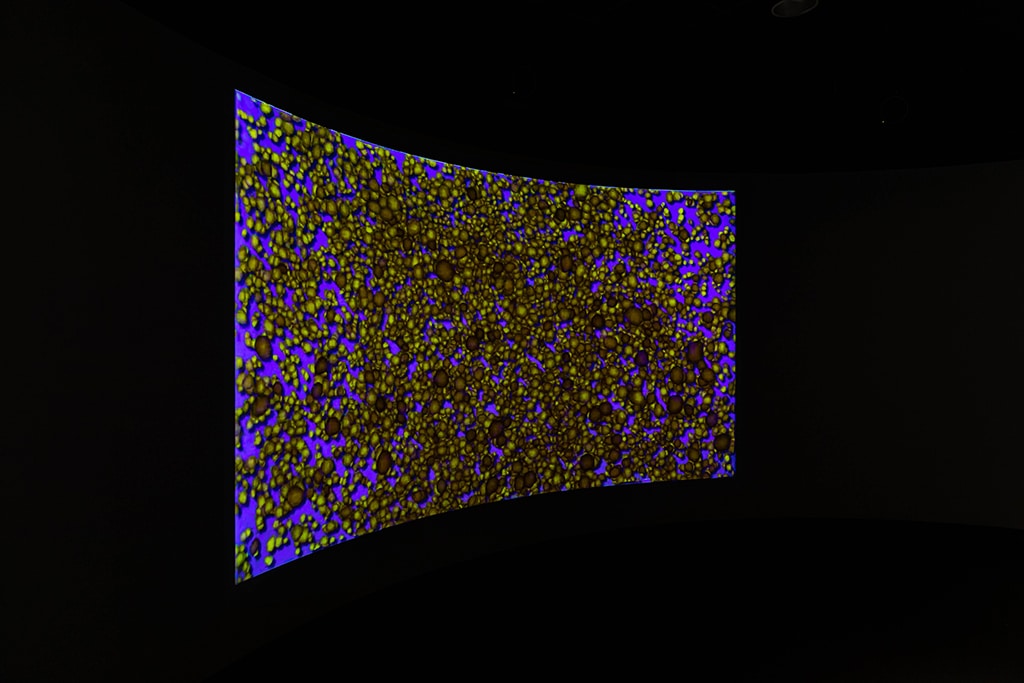
Screen City’s founding principle to explore and promote new and innovative ways to present expanded moving image at the intersection of technologies and architecture, paired with the theme chosen for this year’s biennial, called into question the use of mediums such as digital art and moving image in the service of climate justice. Sure, with its relative easy and broad dissemination moving image and digital art have the possibility to reach a wide audience, but doesn’t observing the world we live in though a device and on screen also serve to alienate us from it? Whilst Ecologies – Lost, found and continued conjured a wish to reactivate by now largely defunct relationships and knowledge systems of the past, the encounter was dependent on and delimited by access to the novel technologies mediating and facilitating it. It would seem that, in attempting to cope with the climate chaos, society by and large appears to have a similar inclination as there exists a growing desire to decelerate and go back to a (seemingly) more simple and sustainable past but the only way this is imagined to be possible is with the aid of ultra-modern technological solutions.
Mirja Majevski is an independent curator and writer based in Stavanger.


